Naminoue Shrine in Naha, The top of the eight shrines of the Ryukyu Kingdom.
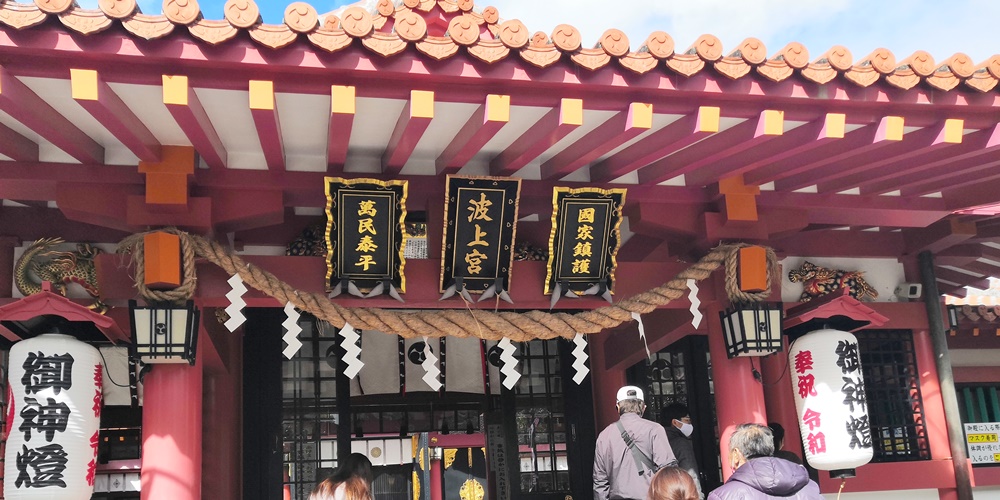
The ”Okinawa Prefectural Shrine Agency” is under an organization called “Jinja Honcho(Association of Shinto Shrines)” in Japan, which encompasses 80,000 shrines nationwide, and There are 10 shrines in Okinawa covered by that Okinawa Prefectural Shrine Agency.
Among them, the shrines that received divine protection from the Ryukyu Kingdom are called “Ryukyu Hassha(the eight shrines of Ryukyu)”. Especially, Naminoue Shrine has been the general guardian deity since the Ryukyu Kingdom era and is still regarded as the Okinawa general guardian deity.
Every year, about 150,000 people visit the shrine for Hatsumode(New Year’s visit to a shrine), and many stalls are also bustling.
Also, it is affectionately called by the locals as “Nanmin”.
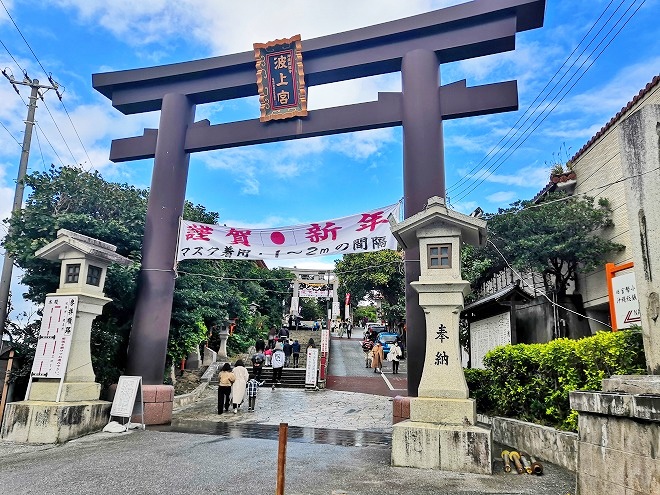
“Naminoue Shrine’s Ichino Torii(the frst torii gate.)” facing at the street.
Naminoue-gu Shrine is adjacent to Naha City’s only beach, Naminoue Beach, Gokokuji Temple, and Asahigaoka Park, which is full of stone monuments.
In addition, there are “Tenson-byo Mausoleum (Confucius Temple)” and “Tsushimamaru Memorial Museum” nearby,
I think there are quite a few people who happened to visit Naminoue Shrine, even if it wasn’t their purpose.
*”Tenson-byo Mausoleum (Confucius Temple)” has been partly demolished since the Supreme Court decision on February 24, 2021.
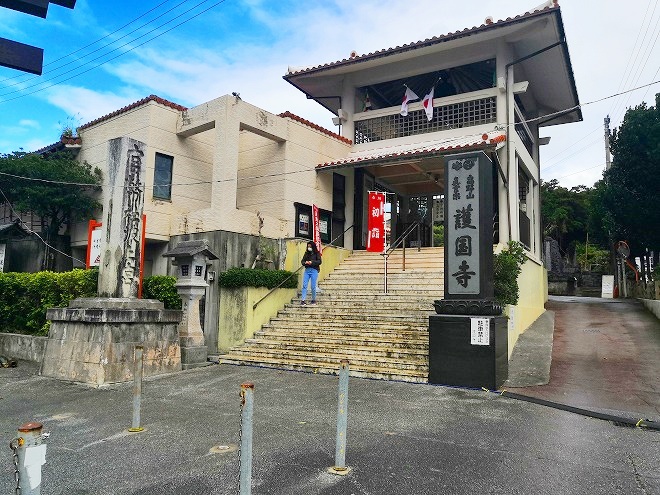
Gokokuji Temple of Shingon Buddhism is right next to Naminoue-gu Ichino Torii.
In the Ryukyu era, All of the “Eight shrines of Ryukyu” have own temples.
In this fact, there is a difference between the mainland’s “shrines are Shinto and temples are Buddhism” and that of Okinawa.
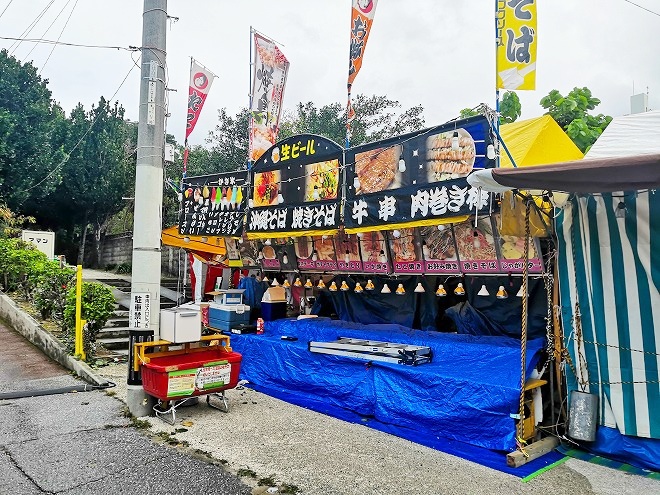
Because it’s New Year’s Eve, stalls are getting ready.
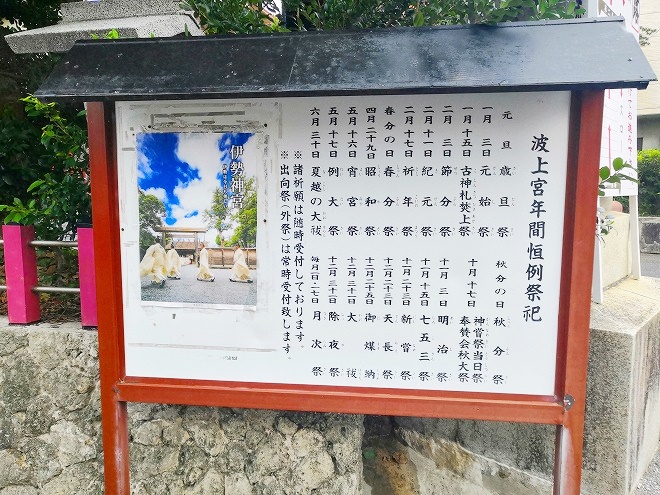
I don’t often come to shrines other than for Hatsumode(New Year’s visit to a Shrine), so I don’t know much about what the shrines do on a daily basis, but of course they hold various rituals at the turning points of the year.
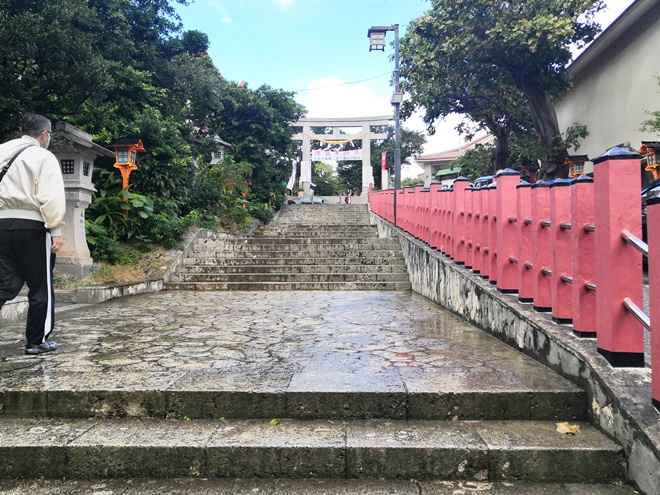
Go through Naminoue Shrine Ichino Torii(the first torii gate) and go up the stairs toward Nino Torii(the second torii gate).
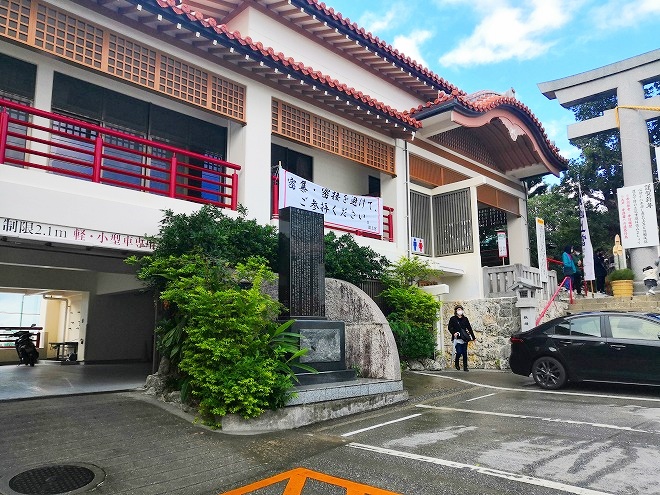
“Sanshuden(Assembly hall)” is on the left side of Naminouegu Ninotorii.
A resting place for worshippers. Of course you can use the restroom.
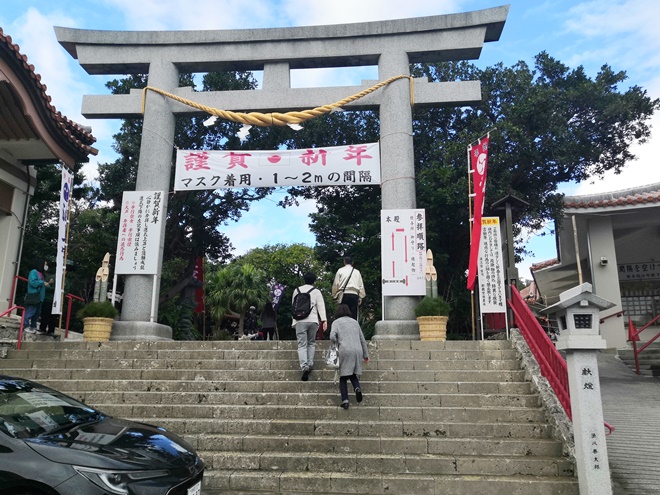
Nino Torii(the second torii gate).
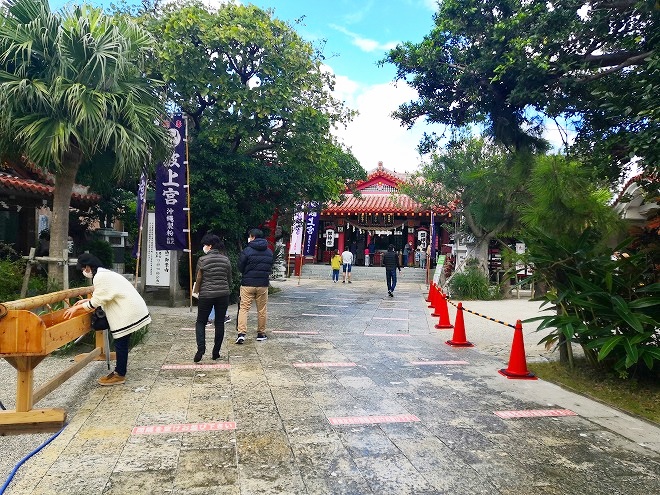
After passing through the “Nino Torii”, you can see the main shrine at the end of the approach.
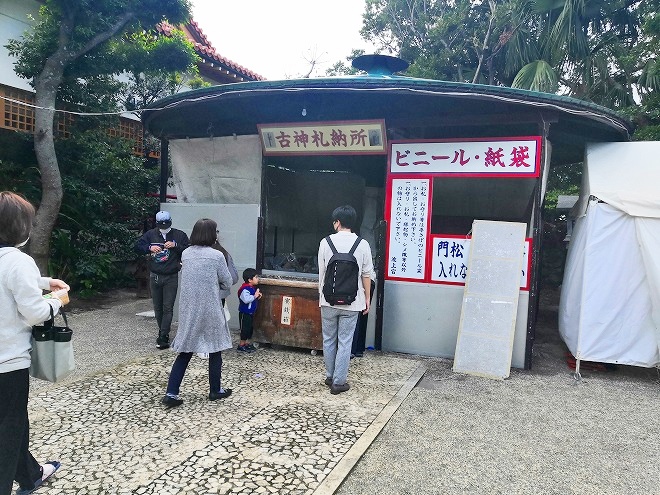
“Kosatsu-nousho”.
A place to return the charms and amulets you bought before last year.
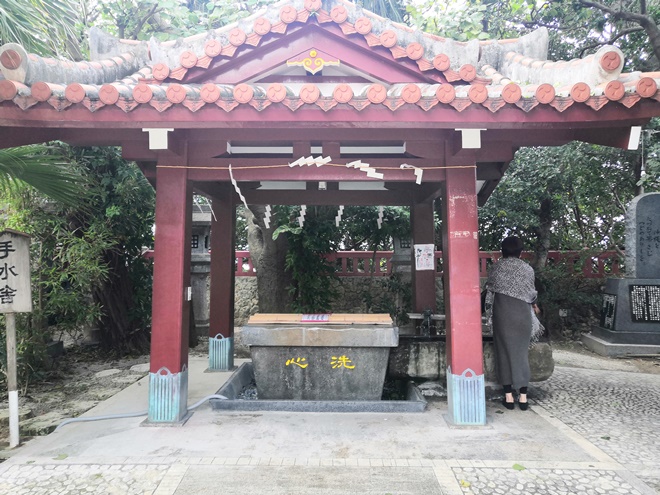
place for ritual cleansing of hands and mouth with water when visiting shrines, called “Chozuya”.
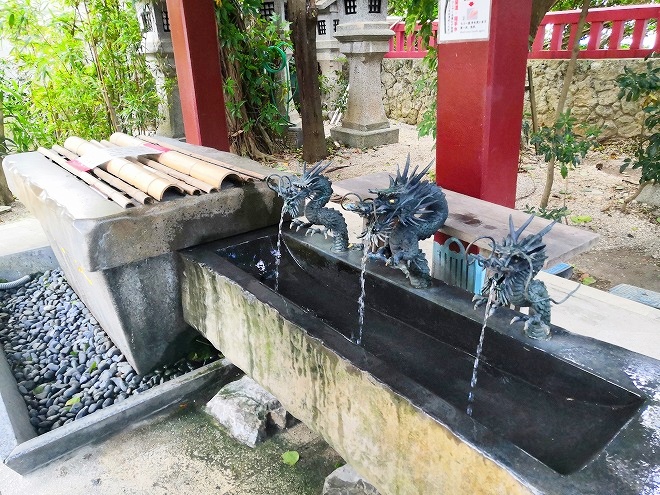
This year, due to the coronavirus, the chozuya is covered and cannot be used.
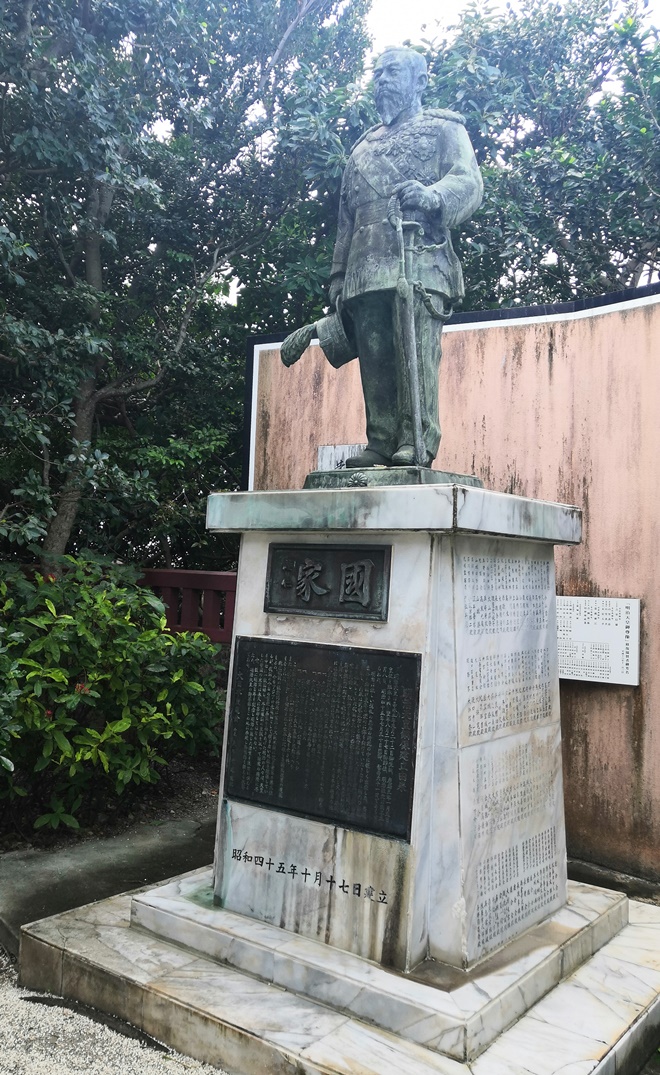
The bronze statue of Emperor Meiji was built in 1970 to commemorate the 100th anniversary of the Meiji era.
The characters for “nation(国家)” on the pedestal are handwritten by Emperor Meiji.
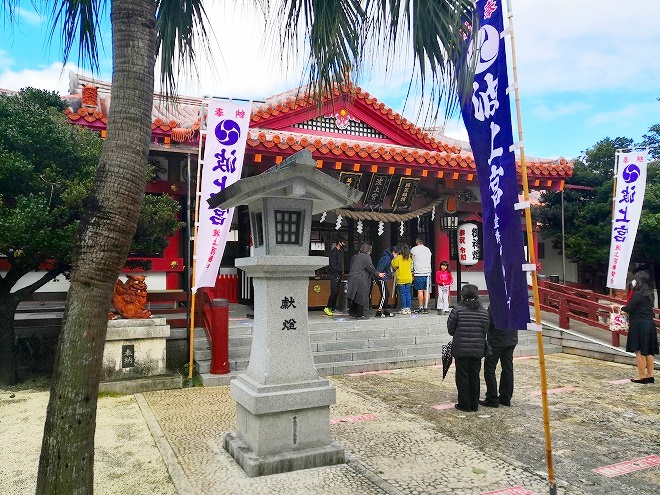
We worship at the main shrine.
This year, lines have been drawn for social distancing.
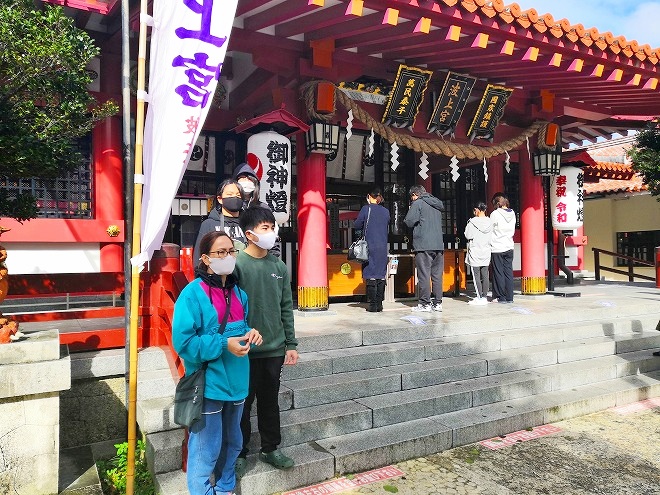
In Japan, when visiting a shrine, “bow twice, clap your hands twice, pray, then bow once.”
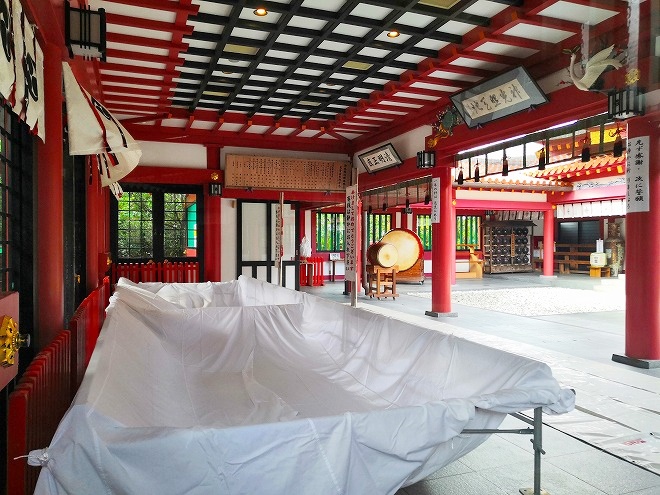
The main shrine.
Since the New Year has not yet arrived, the New Year offertory box has not been prepared, so we threw osaisen-money into the offertory box in front of the main shrine.
Usually, lot of osaisen-money is thrown into the white sheets every New year days.
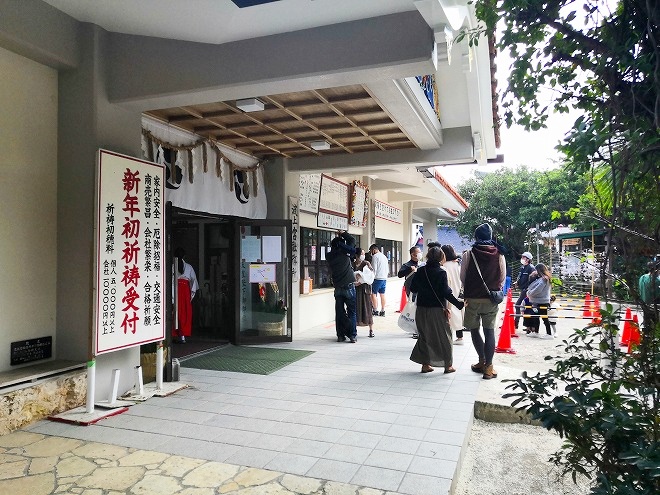
After paying our respects at the main shrine, we proceed to the right and line up at the conferment office to buy votive tablets and amulets.
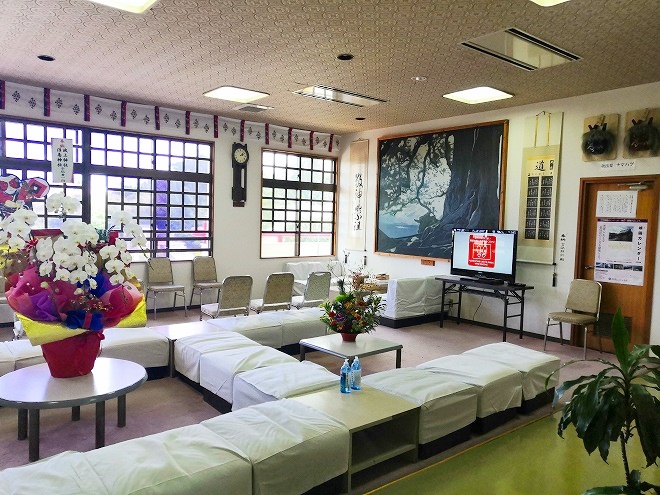
Inside the shrine office.
The “Okinawa Prefectural Shrine Agency”, which preside over the shrines in Okinawa, is also located in the Naminoue Shrine.
Okinawa has by far the least number of shrines in Japan, According to the report of the government’s statistical portal “e-stat” as of 2020-12-22, There are only 16 Shrines in all over Okinawa.
Even in Wakayama Prefecture, which has the second fewest shrines after Okinawa Prefecture, there are 447 shrines, so Okinawa’s number is outstanding.
For reference, the prefecture with the most shrines is Niigata with 4,689 shrines. … about 300 times more than Okinawa.
Reference:Government Statistics Portal Site “e-Stat” Religious Statistics Survey(Japanese).
The Ryukyu Kingdom (Since1872 Ryukyu Domain) was dismantled in 1879 by the Meiji government’s “Ryukyu Disposition” and incorporated into Japan, then became “Okinawa Prefecture”.
Hokkaido, which has a similar situation to Okinawa, was overwhelmingly an ‘Ainu island’ until around the time of the Meiji Restoration, even though the Matsumae Domain existed formally since the 15th century (the name was fixed to Hokkaido in 1869).
Like Okinawa, Hokkaido, which had its own unique culture, also has 795 shrines.
It is not clear why the number of shrines did not increase in Okinawa, but the number of temples is also much less, only 88 exist.s
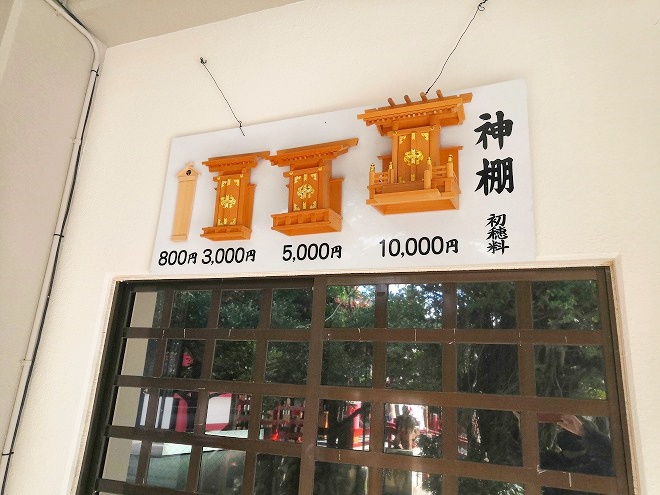
I didn’t know about it because I hadn’t paid attention to it before, but “Kamidana(household altar)” was in this price range…
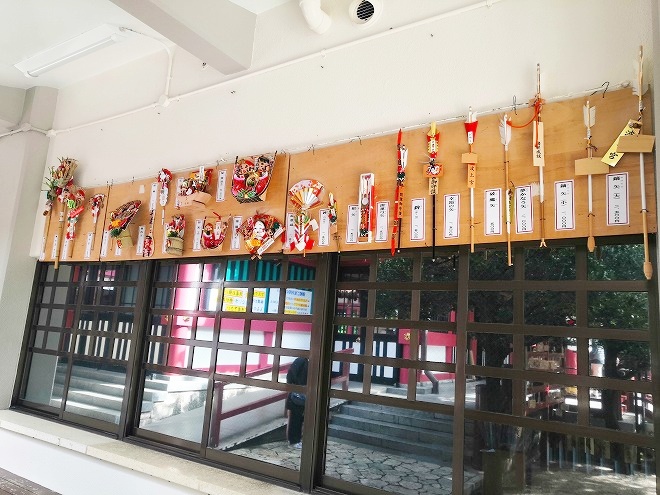
Hamaya, a decorative arrow supposed to ward off evil.
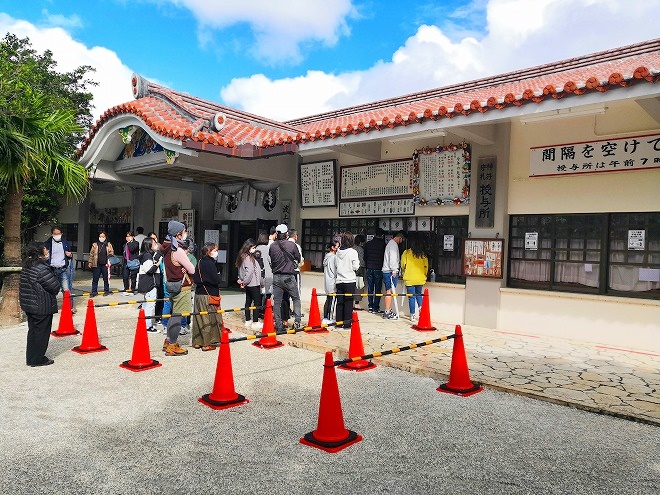
Each of the eight Ryukyu shrines, the official shrines of the Ryukyu dynasty, are located in each temple, and the Ryukyu government pays “salary for priests” and “maintenance expenses for the shrine”, and the administrative office was the “Jisha-za”, which was located in the building on the west side of the Kofukumon gate of Shurijo Castle.
However, after the Ryukyu Disposition (The abolition of the han system), all shrines other than Naminoue Shrine became “Mukakusha(the lowest qualification shrines.)” in light of Japanese law at the time.
Shrines and temples were “separated from Shintoism and Buddhism”, and most of the shrines fell into poverty and devastation because of the lack of income from the government.
Most of the shrines were devastatingly destroyed during the Battle of Okinawa in World War II.
Organizing the story up to this point, …then,
After researching each shrine from the official website, Naha City database, Okinawa Prefectural Shrine Agency, etc., and arranging them in chronological order…,
□Naminoue Shrine
Co-located temple: Gokokuji
Enshrined deity: Kumano Gongen
Founded: 1368
Founder: 1st Nakayama Kingdom, King Satto (conjecture)
Address: 1-25-11 Wakasa, Naha City.
□ Okinogu Shrine
Co-located temple: Rinkaiji
Enshrined deity: Kumano Gongen
Founded: 1451
Founder: unknown
Address: 44 Ounoyamacho, Naha City
□Sueyoshi Shrine
Co-located temple: Henjoji
Enshrined deity: Kumano Gongen
Founded: 1450-1457
Founder: 1st Sho Dynasty 6th King Sho Taikyu
Address: 1-8 Sueyoshicho, Shuri, Naha City
□ Futenmangu Shrine
Co-located temple: Jingu-ji
Enshrined deity: Kumano Gongen
Founded: 1459
Founder: 1st Sho Dynasty 6th King Sho Taikyu
Address: 1-27-10 Futenma, Ginowan City
□ Asato Hachiman Shrine
Co-located temple: Shintokuji
Enshrined deity: Hachiman-shin
Founded: 1466
Founder: 1st Sho Dynasty 7th King Sho Toku
Address: 3-19-14 Asato, Naha City
□Ameku Shrine
Co-located temple: Seigenji Temple
Enshrined deity: Kumano Gongen
Founded: 1465-1487
Founder: unknown
Address: 3-19-3 Tomari, Naha City
□ Kin Shrine
Co-located temple: Kin Kannonji
Enshrined deity: Kumano Gongen
Founded: 1527-1555
Founder: Nisshu Shonin (conjecture)
Address: 222 Kin, Kin Town, Kunigami District
□ Shikina Shrine
Co-located temple: Jinnoji
Enshrined deity: Kumano Gongen
Founded: 1556-1572
Founder: 2nd Sho Dynasty 5th King Sho Gen
Address: 4-1-43 Hentagawa, Naha City
It seems that there are many things even specialists do not understand.
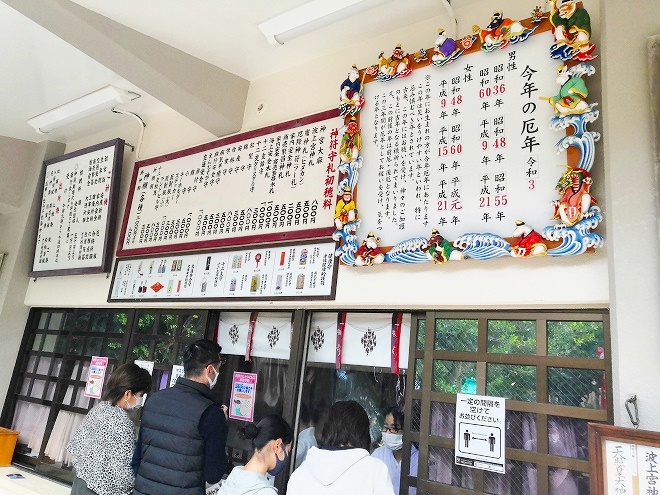
“Amulet shop” that sells amulets, votive tablet, charms, etc.
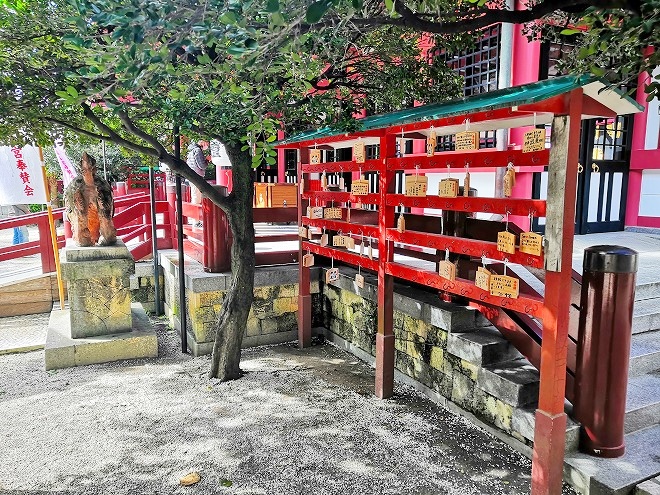
Write a wish on an Ema and hang it on the Ema-kake-dokoro in front of the main shrine.
Two days later, the second daughter’s classmate said, “I saw your Ema, it’s so stands out.”
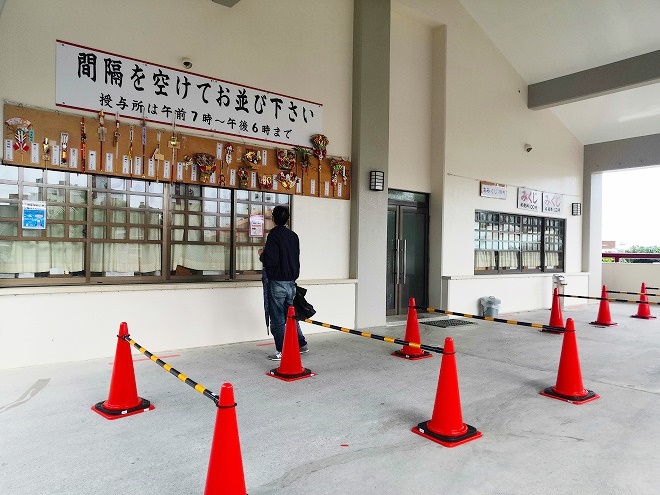
Fortune slip shop.
Every year during the first three days of the New Year, all of these counters become omikuji sales areas and there is a long line of people waiting to buy them.
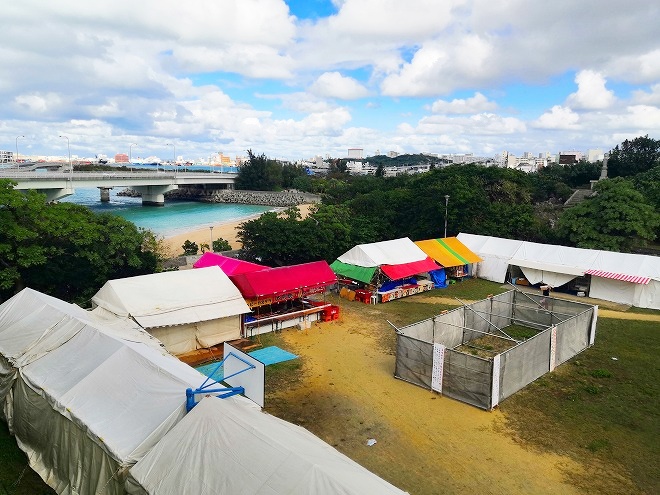
Naminoue Beach can be seen below.
It seems that preparations for the stalls are also progressing.
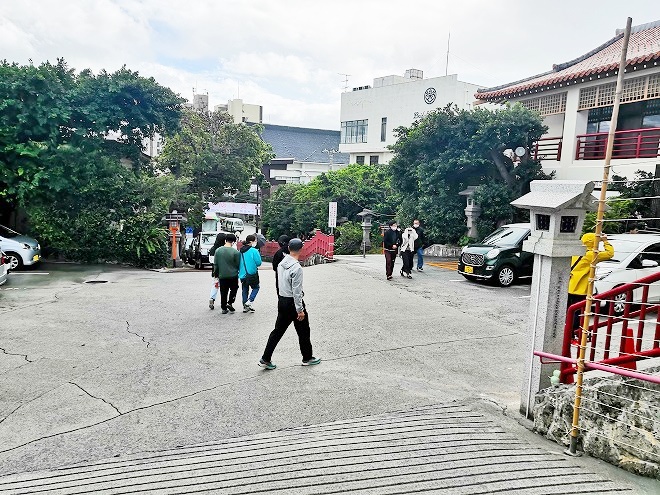
Finish the visit by tying the fortune slip.
I wish 2021 could be a good year for everyone.
Confucius Mausoleum (Kume Shisei Mausoleum)
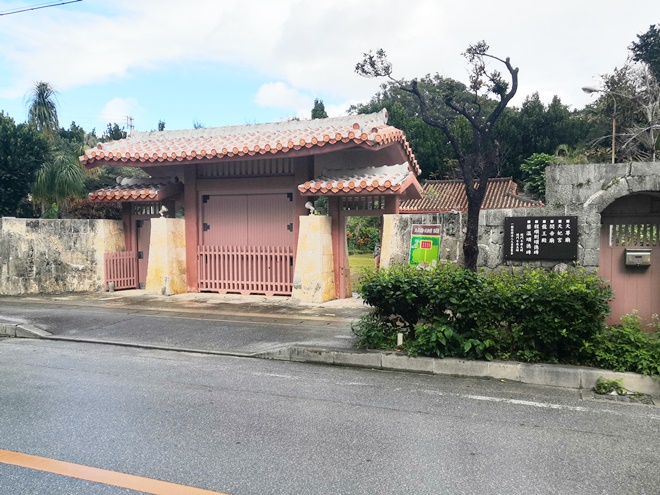
Shiseibyo.
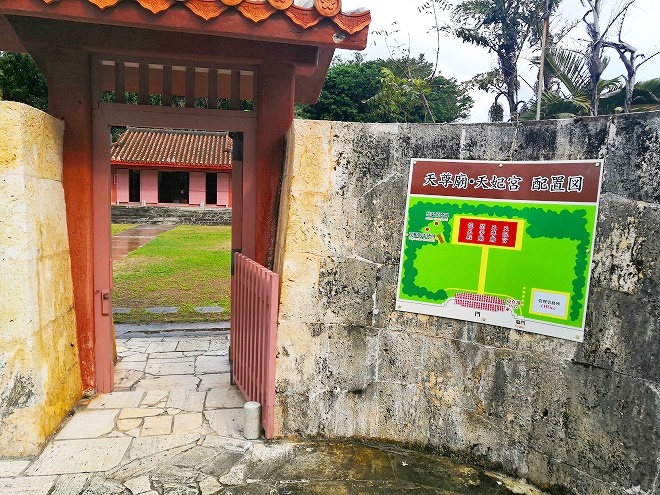
Confucius Temple is said to have been built by them in 1676 as a facility for the veneration of Confucius and the sages and philosophers of Confucianism.
As its name suggests, it enshrined Confucius, the founder of Confucianism, and four sages called ‘Shikai’ (Yan Zi and Zi Si in the east, Zeng Zi and Mencius in the west).
Many of the shipbuilding, navigation, and construction engineers dispatched from China were Fujian and Hakka from Fujian Province, so they are sometimes called the ‘Thirty-six families from Min.’
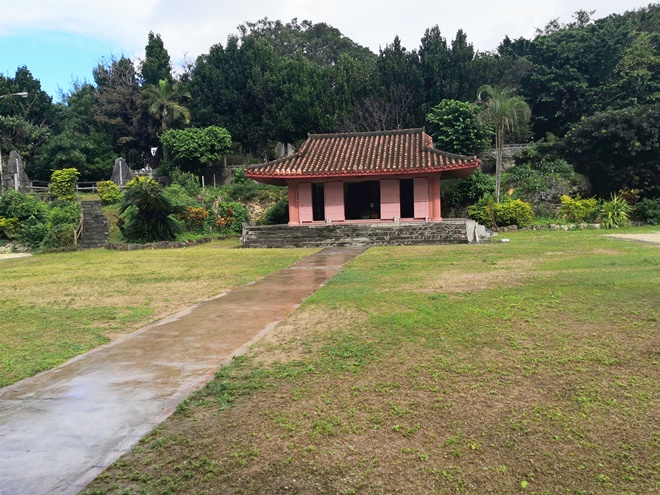
Tianzun Temple.
The Confucius Mausoleum was built during the Ryukyu Kingdom era, but as of 2020, due to various issues such as the constitutional separation of church and state, the fourth Mausoleum has been demolished.
The Ryukyu Kingdom era, the Imperial Japan era, and the post-war era, The nation had been changed, so the way of thinking about religion also changes.
… well, things are going to change…